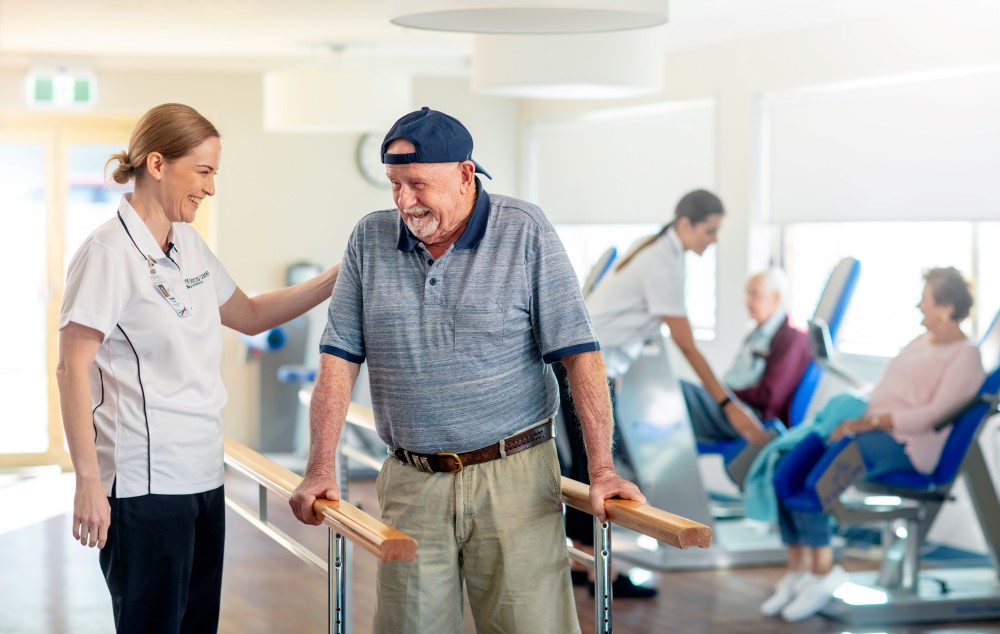Understanding pain with Feros Care
26 February 2021

According to Pain Australia, seniors and those living with a disability have the highest rates of chronic pain in our community.
One in three people aged over 65 are living with chronic pain, one in four people with a profound disability experience severe pain. These statistics are affirmed by our experiences in the community. As an organisation we support thousands of seniors and people with disability each year, so we talked with Allied Health Professional Sarah Beaumont and comedian Wil Anderson (who has chronic pain) to understand pain, and the best approach to pain management.
Virtual Care Team Manager, Sarah Beaumont and her team support Feros Care clients with pain every day, and their focus is on supporting clients with a multi-disciplinary approach to pain management.
An Exercise Physiologist for thirteen years, prior to joining the Feros Care team, Sarah says “Pain is a huge factor affecting quality of life for our seniors.”
“I’ve seen patients who are in a negative cycle whereby the pain heavily interrupts their sleeping pattern, putting them in a place where they are less equipped to deal with the pain, and that pain becomes amplified.
“Often the fear of pain prevents a patient from attempting activities that can be beneficial for them, and that’s perfectly understandable. It’s about empowering people with confidence so that they can overcome that fear,” she explains.
“It’s all part of the multi-disciplinary approach to pain management. Exercise is one of the best treatments for pain, and together with pain relief and effective psychological support, it can be managed effectively,” continues Sarah.
Pain advocacy body, Pain Australia supports this view.
“There are many aspects to pain management and different pathways to care. Modern pain care uses a ‘whole person’ approach that considers physical, social and psychological factors. It is the most effective way to reduce pain, improve function and mood and reduce disability.”
Ultimately, it’s not just about prescription pain relief. Pain relief is just one aspect of effective pain management.
“I’ve had patients where the pain medication they’ve been prescribed has a worse impact on their health than the pain itself,” explains Sarah. “In some cases, alternatives to prescribed pain medication, such as medical cannabis have proven an effective treatment.”
Comedian, Podcaster and TV personality Wil Anderson, who lives with osteoarthritis uses medication, including medically prescribed cannabis, and other tools to manage his pain and keep living the life he wants to.
"I think it's about finding the mix, right?” says Wil, on the Grow Bold with Disability Podcast.
“The idea with these things that there is one solution is probably the naivest way of looking at it. You have to find something that works for you. And no one's pain is the same.”
“There are certain exercises that are really good for it, and there are certain exercises that are really terrible for it, you know? I can't fix it all with exercise. I can't fix it all with acupuncture. I can't fix it all with cannabis. And I can't fix it all with...prescription medication. But some combination of those things can go towards helping and getting you to a place where you can operate in a way that's healthy enough.”
Resources: Understanding Pain Video.
Sarah's Top Tips for supporting people with pain
don't dismiss their pain. For them the pain is very real, and dismissing it causes further distress and emotional upset
encourage them to seek a multi-disciplinary approach that considers physical, social and psychological factors
understand that what works for someone, may not work for someone else. Support the clients on their journey
celebrate the small wins so they start to see progress.